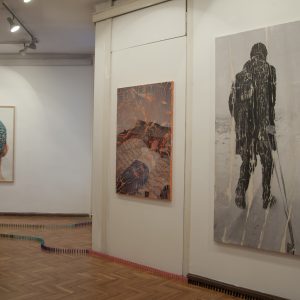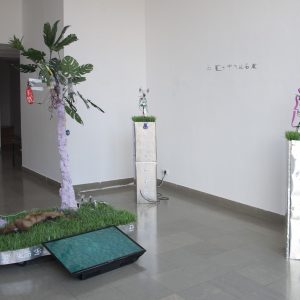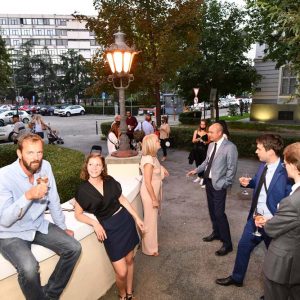Novi Sad, September 8th to 28th, 2020
WHAT ARE DANUBE DIALOGUES?
Danube Dialogues is an international festival of contemporary visual art in Novi Sad, which deals with the perception of the most current artistic trends in the Danube region. The geography of the Danube from the source in the Black Forest (Schwarzwald) to the Black Sea connects 10 countries with very different levels of economic and social development – from Germany and Austria, as the most developed countries in the region, through the former socialist countries of the Eastern Bloc, some of which are already the EU Member States, such as Hungary, Bulgaria, Romania, and Croatia, via Serbia that is still in transition and strives to enter the large EU family, all the way to Moldova and Ukraine, which are still facing open crisis issues.
This kind of geography gives the possibility of an interesting overview of trends in contemporary art. Thus, the Danube is the common denominator, but even more the metaphor and a call for co-operation. The goal of the Festival is to develop a platform for presentation and reflecting on the current trends in contemporary art, co-operation and exchange in the Danube region. The Festival was launched in 2013 and so far 8 editions have been organized with the participation of over 400 artists, critics and curators from 14 countries of the Danube macro region (Germany, Austria, Slovakia, Hungary, Croatia, Serbia, Romania, Bulgaria, Moldova, Ukraine, BIH, Slovenia, Montenegro and the Czech Republic).
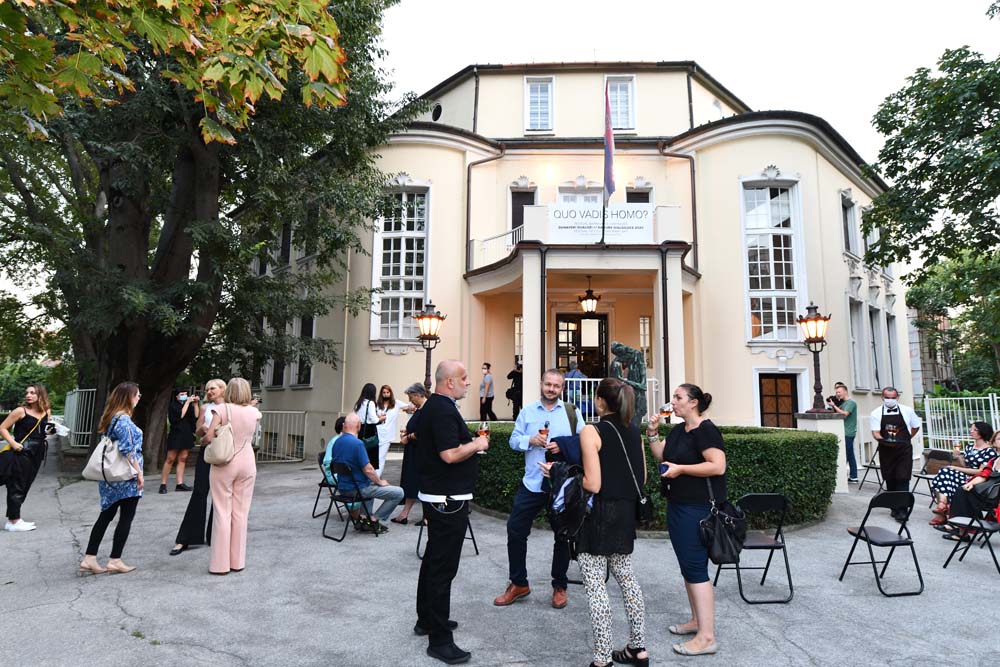
DANUBE DIALOGUES 2020
The Bel Art Gallery organized the 8th edition of the Festival of Contemporary Art Danube Dialogues 2020 in Novi Sad from September 8th to 28th. The Festival, as in previous editions, offered an overview of the most current events in art of the Danube region. The Festival took place in the midst of global uncertainty caused by the Corona pandemic, confronting us with unexpected challenges. Soon after the crisis broke out, the Festival team, together with the curators, decided to continue its preparations for the Festival, convinced that one must act regardless of life circumstances. This encouraged artists and brought about optimism and hope, offering new creative impetus at a time when museums and galleries around the world were closing and exhibitions, fairs and art events were being cancelled one after another. We adjusted the Festival programme to these new conditions, prepared alternative options and developed an online platform for presenting artistic contents to the audience.
The theme of this year’s Festival, “Quo vadis homo?” fully reflects the present moment of grave concern for human destiny. Life has no alternative, and adapting to the circumstances is a prerequisite for our survival. Respecting all the necessary protection measures, we have managed to become the first international art event in Serbia and the region, which was physically attended by artists and curators from abroad.
This year, the Festival programme is dominated by a central exhibition entitled “Quo vadis homo?“, which was contrived by Ami Barak, an independent curator from Paris, and Sava Stepanov, an art critic and Art Director of the Festival of Contemporary Art Danube Dialogues in Novi Sad in their joint effort to point to the concern of contemporary artists for the man’s destiny in dehumanized world. The topic is imposed by the circumstances of global chaos, in which it is truly difficult to find the true backbone of sense today.
Until recently, the man believed that he was on the path of constant progress, that he followed the civilization breakthrough conditioned by the progress of science and “electronics in the service of a man”. Such expectations were not fulfilled, so the man of our time soon found himself in front of the modified characteristics of these good features turned into means of rigid control, in the middle of a restructured society in which he was re-qualified into a resource component of neoliberal capitalism.
This inversion of the sense introduces a man under the wing of depression, which has become the dominant diagnosis of the state of the modern world. The participants of the exhibition include: Antal Lakner (Hungary), Tatjana Danneberg (Austria), Pusha Petrov (Romania), Oto Hudec (Slovakia), Ivan Moudov (Bulgaria), Oleksiy Sai (Ukraine), Alexander Tinei (Moldova/Hungary), Ottmar Hoerl (Germany), Ana Josipović (Croatia), Milena Milosavljević (Serbia, Germany), as well as Ana Adamović, Orjen Đurić, and Stefan Lukić (Serbia).
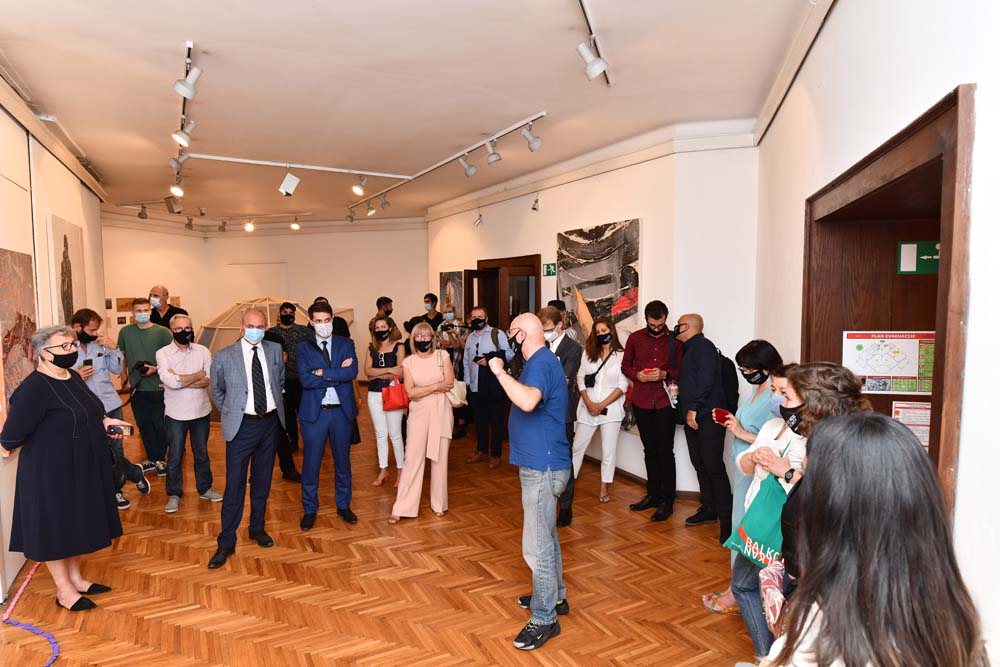
At this year’s Danube Dialogues, the exhibition entitled Novi Sad – Timisoara Dialogue was realized as another in a series of exhibition dialogues of artists from Romania and Serbia, namely, from the cities that have been named the two future European Capitals of Culture.
Meetings of Romanian and Serbian artists have a long history now, thanks to the event in which Romanian artists have been participating since the first exhibition, and mostly thanks to the good co-operation relations of the Bel Art Gallery with partners from Timisoara Triad Foundation and Jecza Gallery.
As Vesna Latinović, the Director of the Danube Dialogues Festival, states: “The co-operation of these institutions is completely infiltrated into numerous contextual relations of twinned cities that successfully co-operate and bring together many similarities. Novi Sad and Timisoara are located in the Banat plain, have a rich history and strong cultural tradition and they are nowadays characterized equally by dynamic cultural scenes. In fact, they are multiethnic and multiconfessional cities, where multiculturalism is a way of everyday life. It is also important to note that rich activity in the domain of contemporary art is in progress in both cities; they are the places with active academies of arts from which new young artists regularly arrive; numerous museums and galleries function in both cities and already traditional large international exhibitions of Danube Dialogues are held in Novi Sad while the Art Encounters Biennale are held in Timisoara.”
At the exhibition Art Dialogue Novi Sad-Timisoara we saw the confronted discourses of three Romanian artists: sculptor Peter Jecza, painter Ioan Aurel Muresan and multimedia artist Ana Adam from Romania, and three Serbian artists: young sculptor Sanja Radusin, multimedia artist Nataša Teofilović and photographic artist Vladimir Tatarević in the selection of Timisoara gallerist Sorina Jecza Ioanovici and Novi Sad art critic Sava Stepanov.
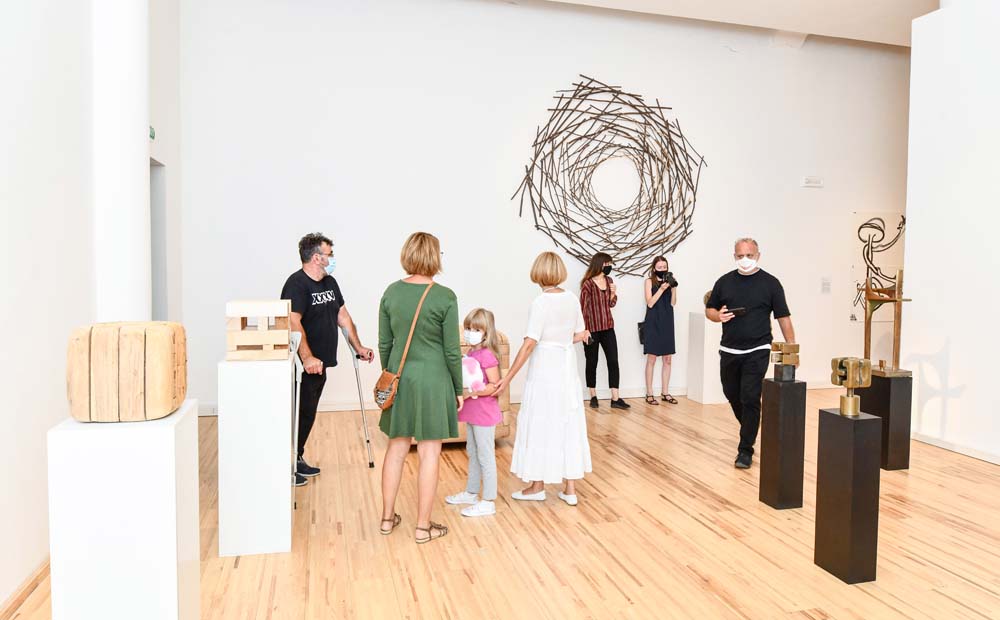
At this year’s Danube Dialogues, three individual exhibitions of contemporary Serbian artists were set up within the programme Serbia + with the task of answering the same topic “Quo vadis homo?” The exhibition entitled Lost in Translation by a sculptor Mića Stajčić from Belgrade, who “makes an inventory” of the painful places of our culture and modern life with a lot of critical irony, was organised in the Bel Art Gallery. The sculptures of Veroljub Naumović, a young sculptor from Novi Sad who philosophizes on the impossibility of a modern man to overcome the fateful scope of general endangerment and alienation with surprisingly precise (hyper)realism, was presented in the Small Art Salon of the Cultural Centre of Novi Sad. Finally, the Gallery of Vojvodina Fine Artists Association presented the works of Vuk Ćuk, a multimedia artist from Belgrade who, with his mobile paintings and sculptures, manifests the spirit of our life in the age of invasive technicalism and general robotics and technologization in an authentic and clearly personalized way.
The Festival co-operates carefully and continuously with cultural institutions and organizations in Novi Sad, Serbia and abroad, which contributes to a high professional level and successful realization of the Festival.
Due to all this, the Danube Dialogues are gaining a growing reputation abroad and we have had the opportunity to present ourselves at important conferences such as The Second China and Central and Eastern European Countries Arts Cooperation Forum, Chengdu, China, 2018. The result is China’s visit to the Festival in 2019 and the introduction of the Guest Country segment, which gave the event its intercontinental significance and visibility. We were also in Budapest – at the Bridge Conference 2018, Sofia – at the Annual Forum of the EU Strategy for the Danube Region, Ulm – at Donausalon: Novi Sad Bridge to Europe 2019. The project was nominated for the ICOM Annual Award in the field of international co-operation in 2019, and last week the Festival was presented at an online conference in Johannesburg within Joburgfest.
The Festival is supported by the City of Novi Sad, Ministry of Culture and Information of the Republic of Serbia, and Provincial Secretariat for Culture, Public Information and Relations with Religious Communities. The partners in the project include the Fine Art Gallery – Rajko Mamuzić Gift Collection, Cultural Centre of Novi Sad, Museum of Contemporary Art of Vojvodina, Novi Sad 2021 Foundation, Goethe Institute, Austrian Cultural Forum, French Institute in Novi Sad as well as the Embassies of the Danube countries in Belgrade.
